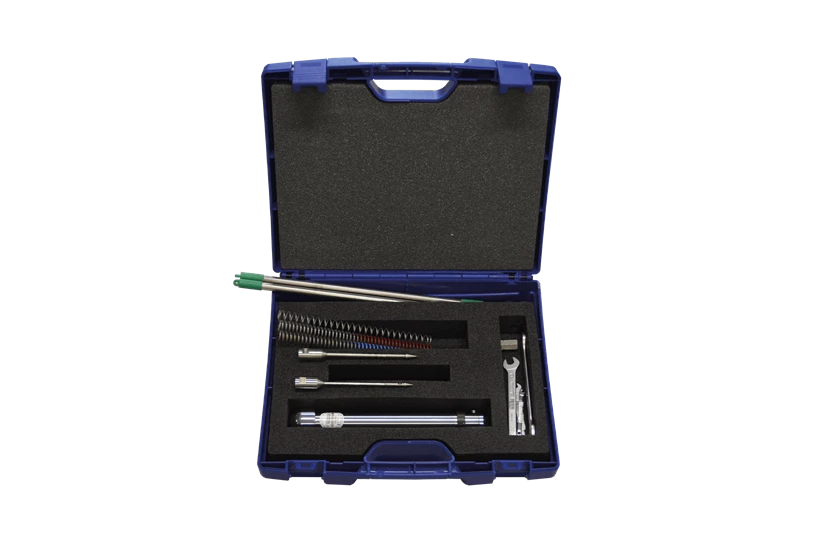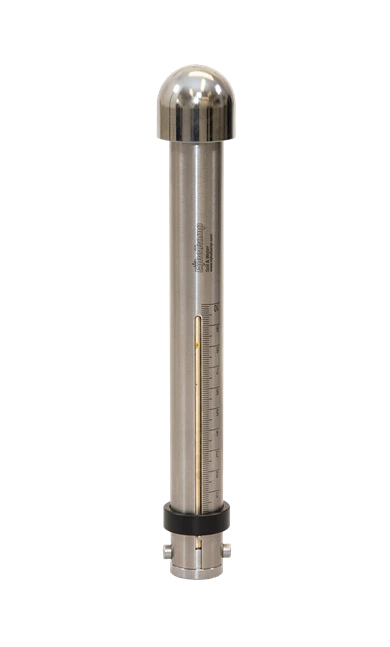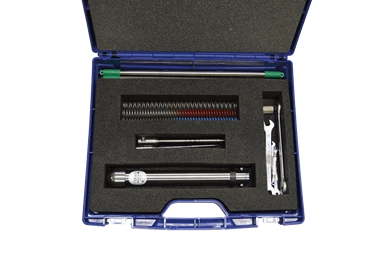


The hand penetrometer for top layers is a device that is used to determine the penetration resistance of top layers. This instrument can also be used for horizontal measurement, for instance in the walls of profile pits, thanks to the limited overall length of the device.
The Royal Eijkelkamp hand penetrometer is used to determine the penetration resistance of top layers. For instance, if you wish to determine the density in a top layer of a sports field in order to decide whether it is playable. Because of the limited overall length of the device, the hand penetrometer can also be used for horizontal measurement, for instance in the walls of profile pits.
The principle of the hand penetrometer is based on measuring the highest penetration resistance of a cone over a distance of about 3.9 inch (10 centimeter). The penetration resistance is measured by means of a compression spring.
The instrument is supplied with a number of cones and compression springs. The combination of a cone and a compression spring is selected based on the expected penetration resistance. If the expected penetration resistance is high, a cone with a small surface is selected and a compression spring with a large maximum force and vice versa.
Applications
Set contains
Would you like more information or do you have any questions? Please download our brochure or contact our specialist.
| Hand penetrometer for top layers - IB | |
|---|---|
| Angle of cone | 30 ° |
| Cone surface range | 0.25 - 0.5 cm² |
| Connection | Screw thread |
| Maximum force | 1500 @ 0,25 cm² kPa |
| Maximum measuring depth | 23.6 inch | 60 cm |
| Measured parameters | Rod |
| Measuring accuracy | 39.3 inch | 100 cm |
| Measuring range | Undisturbed |
| Product material | Stainless steel, iron, other material |
| Reading accuracy | 1% |
| Registration type | Manual |
| Package size | 16.1 x 11.8 x 3.5 inch | 41 x 30 x 9 cm |
| Weight | 5.9 lbs | 2.68 kg |